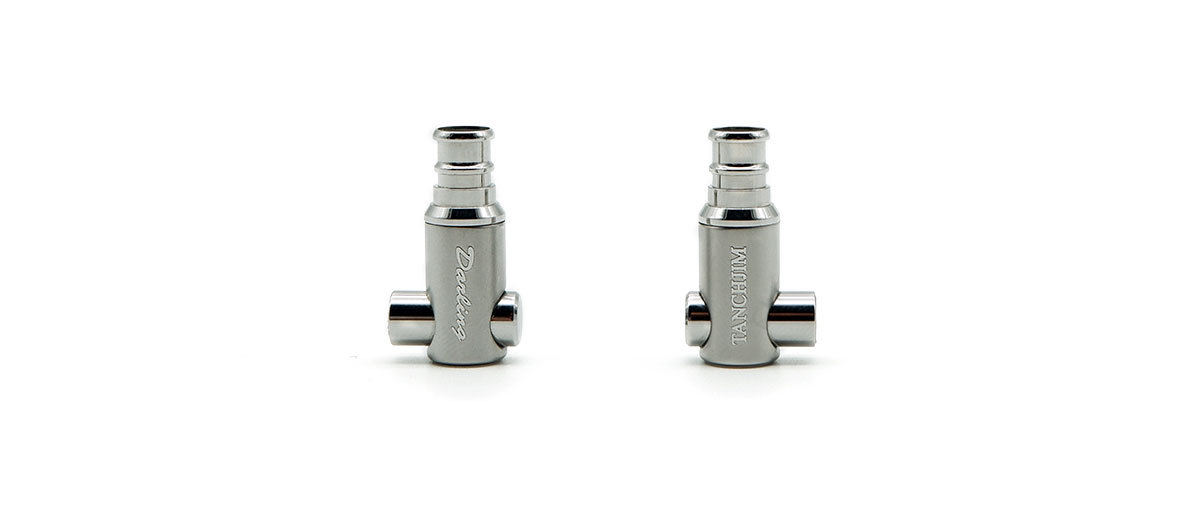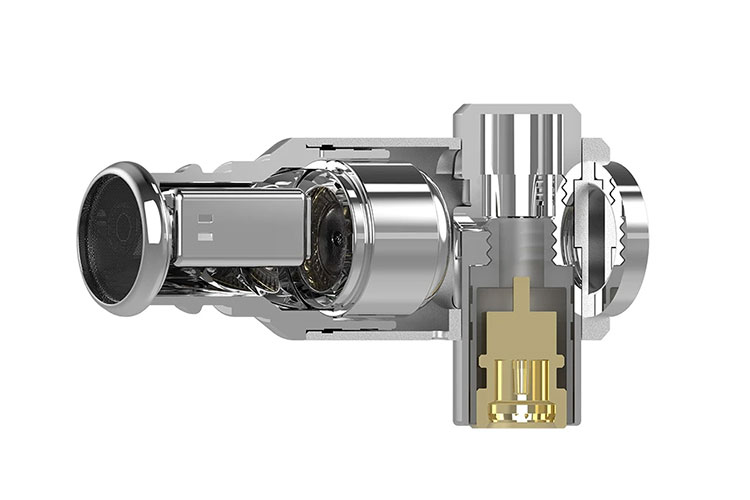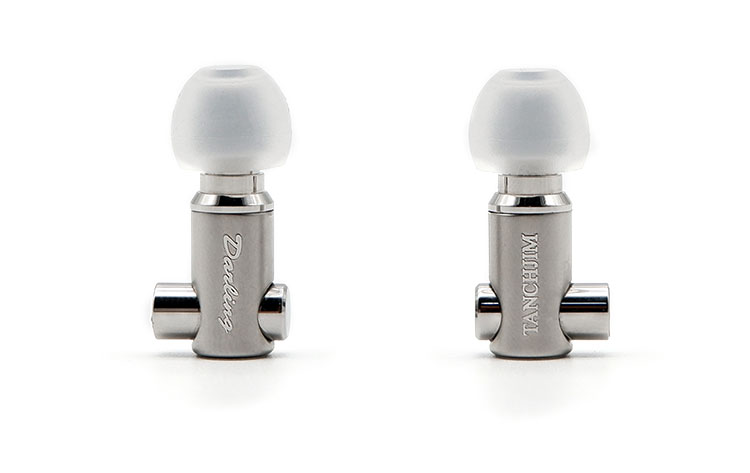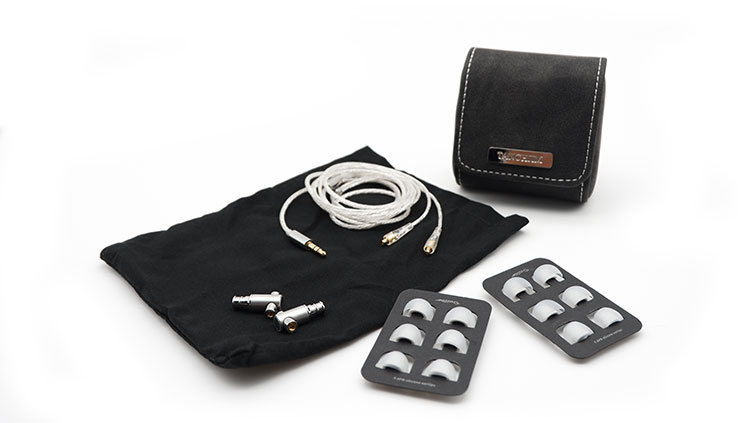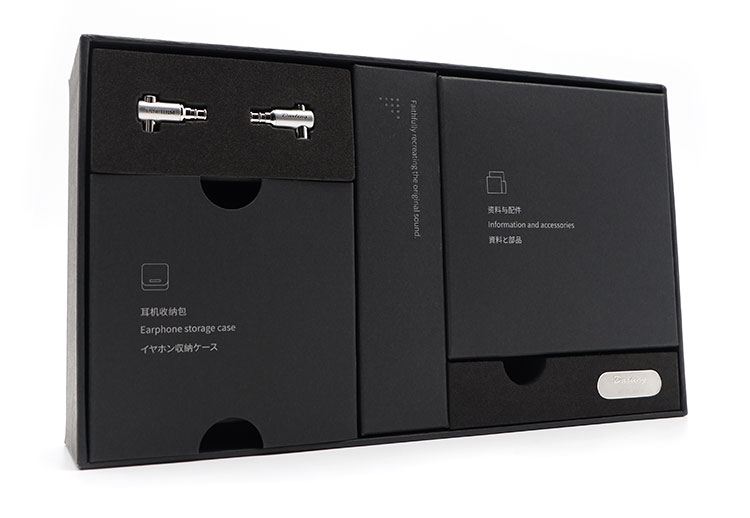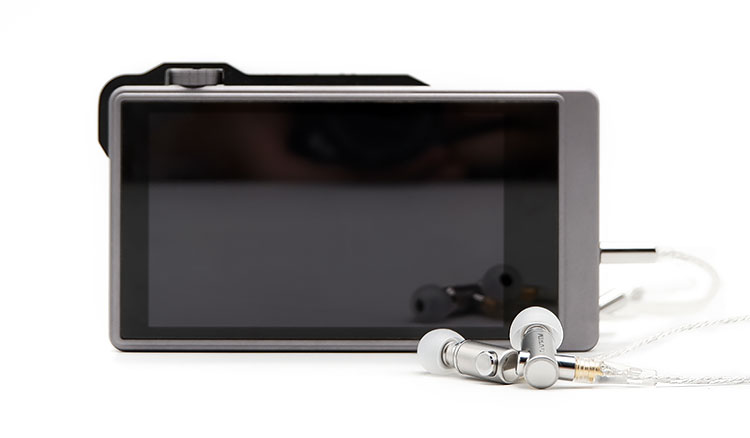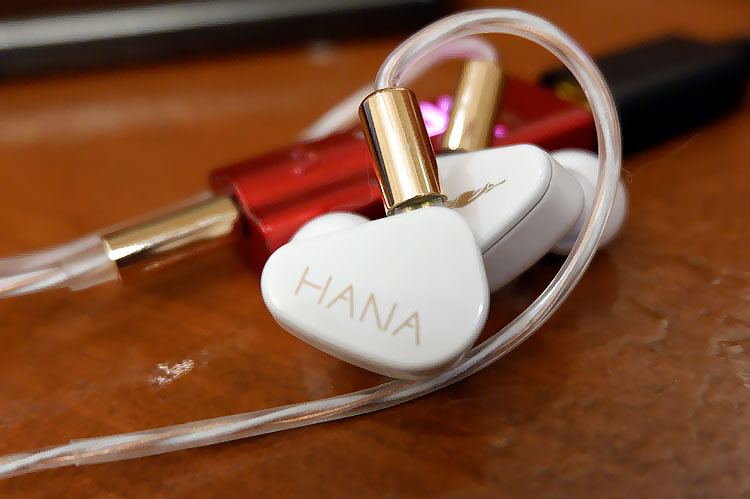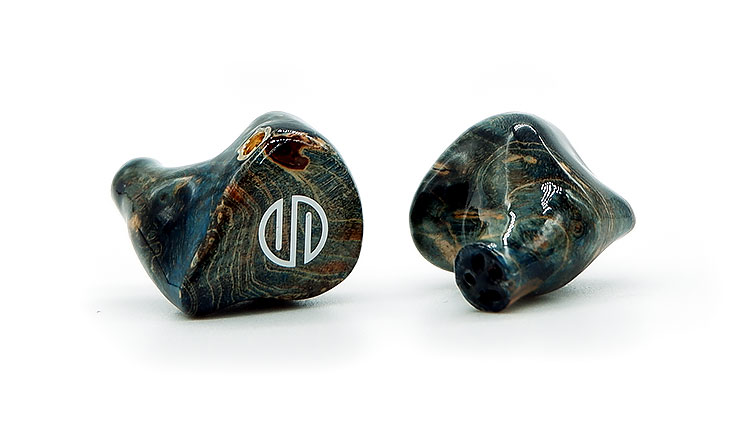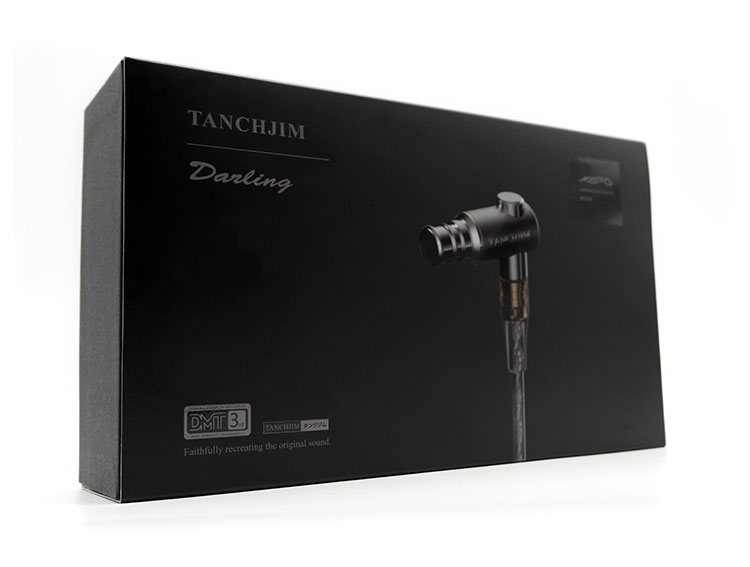The Tanchjim Darling is a triple driver hybrid universal IEM featuring a 3rd generation DMT high magnetic flux driver and two BA drivers. It is priced at $419.99.
Disclaimer: The Tanchjim Darling was sent to us as a sample in exchange for our honest opinion in this review. We thank Shenzhen Audio & Tanchjim for this opportunity.
To learn more about Tanchjim reviews on Headfonics you can click here.
Note, this review follows our new scoring guidelines for 2021 which you can read up on here.
Tanchjim is a company from China that has been producing IEMs since 2015. Their name is phonetically translated from the Chinese words for Angel of Prosperity. Their products fit the concept of the angel, as their logo, as well as the overall feel of their packaging and aesthetic, is always glamorous in their way.
A few months ago, we’ve had the privilege to review Tanchjim’s Hana IEM. It’s their midrange IEM with a striking rose gold themed package and a single dynamic driver design that competes well in its price range.
This time, they have released their latest flagship product in the form of the Tanchjim Darling.
Tech Highlights
The Darling was developed using Finite Element Analysis, which is a mathematical modeling method that breaks down a complex system into more digestible mathematical models.
This is the usual model that is used in computerized design analysis. With Finite Element Analysis together with the Tanchjim team’s experience, they designed the Darling with its 1 dynamic driver with DMT(dual magnetic technology) and 2 Sonion BA drivers.
After going through the computer simulation process, a 3D printed model was also created to ensure that the design intents translate to the real world. It was only after this rigorous process that the Darling was finally created and made ready for production.
Each shell has a unique nozzle design, where it allows for multiple insertion depths of the ear tips. This will allow for a slightly different experience based on the depth of the ear tips.
Design
While most IEMs today opt for an ear loop design, the Darling has a more traditional straight down design. This makes for a more elegant look when the Darling is being worn.
The shells are made of stainless steel and are on the heavier side. I was worried that they would fall off a lot, but I’m glad to say that they can stay in place even on longer listening sessions.
The cable is a magnet-free copper wire with a silver foil finish that integrates well with the silver finish of the IEM shells. The cable is terminated in MMCX connectors, and there is a small dot on the left connector for quick identification.
Although I typically rely on color-coded markings to know the side of the IEM, the small dot on the left side of the cable does the job well while being subtle enough to blend into the silver theme.
Comfort and Isolation
With a cylindrical design, it will seem like the Darling can insert as deep into your ears as you would like. While this is true, the size of the cylinders themselves will prohibit this type of functionality. Inserting the Darling deep into my ears gets uncomfortable especially in the deeper nozzle setting, but your mileage may vary.
Replacing the stock ear tips with a pair of 3rd party ear tips, the ear tips end up compressing just enough in my ears to cushion my ear canals from the nozzle. They also isolate better than stock ear tips while still not feeling closed in. Interestingly, the Darling became more comfortable with foam tips.
Ear tips
The ear tips that are provided with the Darling are T-APB air balance ear tips. These ear tips are designed to equalize the air pressure inside the ear canal with the pressure outside the ear canal. This will then reduce fatigue due to longer listening sessions and sound bias due to environmental factors.
Evidently, the ear tips that are included with the Darling are of high quality, with stiff stems, and a soft body for both variants. The 2 available variants are the larger bore ear tips, and the smaller bore ear tips.
The smaller bore ear tips produce a touch more bass while the larger bore ear tips slightly elevate treble sparkle, and slightly expands the soundstage.
Swapping out the ear tips to foam tips will dramatically change the listening experience though. It slightly changes the tonality, creating a much more balanced overall presentation, while retaining soundstage, and image separation.
Variable Depth Insertion
Having the option for a deeper insertion on the nozzle of the Darling is something quite innovative. Inserting any ear tip deeper into the nozzle will increase the overall clarity while creating a slightly more intimate presentation, and slightly decreasing bass.
With stock tips, I typically use the more shallow depth, since they tend to be more bass shy. On the foam tips, I inserted them in the deeper position to tame down the bass, while slightly boosting clarity. I personally enjoyed the additional tuning option, as it gave me the capability to refine the sound to my taste.
Package & Accessories
Based on my previous experience with Tanchjim, they ensure that their products have a coherent aesthetic. The Darling does not deviate from that trend. The box is a predominantly black design, with silver or gray accents.
Inside the box is the same affair, and the IEM shells are arranged in foam inserts. Each accessory is neatly tucked away inside smaller boxes within the larger package itself. It shows that Tanchjim did not just want to ensure the product’s safety during transport, but also wanted to give a pleasant unboxing experience.
Other accessories in the box include the cable, 2 types of ear tips in 3 different sizes, and a carrying case which is also covered by a dust bag. A good amount of effort has been put into ensuring a coherent aesthetic throughout the package and the product itself.
Sound Impressions
Bass
With stock tips, the Darling in general is a bit bass shy, especially with the large bore ear tips. However, shifting to foam ear tips will elevate the mid-bass to a pleasant and natural level.
On the specs sheet, it’s stated that the Darling can reach 8Hz. Although 8Hz is well below the audible hearing range, this ensures a fairly linear bass response, and reaching very low is not a problem with the Darling. Even the deepest bass tones are displayed quite prominently.
Mid-bass is one of the most significant differences that foam tips have on the Darling. This bumps up the midrange to have a good balance with the lower midrange and the sub-bass region. This slight bump in the mid-bass highlights the ability to have a good amount of attack in the mid-bass region, while having a natural amount of decay.
Bass guitars are presented quite well, as bass grooves are presented with a smooth and lush quality, especially in passages when the bass guitars are playing alone in the track.
Midrange
In the vocal range, the Darling has a very good airy quality in general. Where both male and female vocals can be presented with a wispy or ethereal quality when it can be found in the recording.
With the song Broken Vow by Josh Groban, the Darling presented the airiness of the vocals quite well. With stock tips, the thickness of Josh Groban’s voice is made slightly thinner, but swapping into the foam tips also slightly elevates the midrange to give the vocal presentation a touch more authority.
The lower notes on the Piano are also given slightly more body when foam tips are swapped in. With stock tips, Piano tones in the upper registers tend to have a very natural presentation. This is kept intact even when foam tips are swapped in.
With stock tips, the lower midrange slightly lacks body, but swapping in foam tips will give a better balance between the lower and upper midrange.
Treble
Treble on the Darling generally has a good balance with the rest of the midrange, which allows the presentation of good harmonic overtones, especially with the upper midrange. When cymbals are hit, they have a very distinct sparkle and metallic tone.
With successive cymbal hits though, the rolls can become a bit splashy. Synthesizer tones such as the ones on Fireflies by Owl City have a slightly thinner quality to them though.
While the treble on the Darling can become splashy on busier passages, it is generally controlled. And the amount of treble is perfectly balanced to ensure treble detail has focus while staying away from being too bright.
Staging
With the speed of the drivers on the Darling, most of the frequency range has a more plucked quality to them. While it’s fast, there is a sufficient amount of decay to ensure that it still sounds very natural.
In terms of width, the soundstage that is created is not very large. Most sound elements tend to stay within my head, while each element is placed precisely within the stage. Each of the images that are created is also very sharp, and well defined.
The center image is also very coherent. However, the center image is a bit pushed inside my head, specifically on the tip of my nose. It would have been a bit more natural if the center image was slightly pushed forward.
Synergy
On the specs sheet, it says that the Darling has an impedance of 9.5Ω, and an SPL of 110dB/Vrms. It’s worth noting that the SPL level is given in dB/Vrms, and this translates to around 90dB/mW. Evidently, the SPL numbers seem a bit low, and this becomes apparent when it’s plugged into a phone.
Trying to play the Darling at normal listening volumes would max out the volume on my phone, leaving little headroom if any is left. Playing them through my phone would also dramatically make the soundstage narrower, and compress any dynamic range.
Playing them through my Ibasso DX200 with the AMP1 card unlocks a lot of the potential. Not only can the DX200 play them to the loudest listenable levels, but it also increases dynamic range and soundstage.
I plugged the Darling into the single-ended output of my Burson Soloist 3X and is further improved with even more accurate image separation and directionality.
With the low impedance rating of the Darling, it would be easy to assume that it can run off of anything. But with my testing, a good source that can supply a good amount of current will do wonders.
Select Comparisons
Tanchjim Hana
$159.99
The Hana was my first encounter with the brand Tanchjim, and I was honestly impressed with the attention to detail they gave to the packaging and accessories. With Tachnjim’s flagship though, the Darling simply improved upon whatever they did with their midrange offering.
Technical
The Darling also has a color-themed packaging, with a customized carrying case, and 2 sets of ear tips. The ear tips on the Darling are of significantly higher quality though, since I had to change out the ear tips on the Hana for most of my listening sessions to get a more balanced comfier fit.
The cable that came with the Hana and the Darling both look strikingly similar in terms of aesthetics. However, the materials used with the cable for the Darling are a bit better since it utilizes silver foil cables instead of just OFC cables that are found on the Hana. The insulating material is the same though, so cable stiffness is similar on the 2 IEMs.
Cable terminations are also different since the Darling has an MMCX connection while the Hana has a 2-pin connection. The 2 pin connection on the Hana is a bit loose where the IEMs would fall off of them due to their weight sometimes. Determining left and right is a bit easier on the Darling as well, since the cable comes with a dot on the left connector.
Both make use of the same DMT 3rd dynamic driver, however, the Darling has an extra 2 Sonion Balanced Armature drivers that take care of the midrange and the treble. Despite the slightly higher 32Ω impedance, the Hana is easier to drive, since I had to crank up my DX200 around 6 to 8 notches to volume match.
Performance
While the 2 utilize the same driver technology, the Darling is tuned quite differently from the Hana. The Darling has a much deeper sub-bass extension, but the Hana has a slight mid-bass bloat comparatively.
They have an equal amount of midrange presence, but textures are just a bit easier to pick out with the Darling. The treble is a bit brighter on the Darling, while remaining comparatively much better controlled even with busier cymbal splashes.
The Hana has a slightly more girthy mid-bass region, but the Darling is punchier and has a more natural decay with every note. The soundstage is a bit wider on the Hana, however, this comes at the expense of a grainer image.
Aesthetically the Darling and Hana are cut from the same cloth. But Tanchjim has clearly made the Darling a more refined version of the Hana.
With a more accurate tonal balance, and improvements in the technical aspects from the Hana, like sub-bass extension, detail retrieval, and overall control. The Hana is clearly a fun-sounding IEM, but the Darling is just a step above in the Hana.
BGVP DM8
$349
Technical
Both are flagships in their own right, and it shows when it comes to the package that both come with. Tanchjim and BGVP prioritized different things though.
The Darling has a more coherent aesthetic to the whole package, while the DM8 has more functional accessories that come with it. Notably, the DM8 comes with a 2.5mm TRRS balanced cable with a 3.5mm single-ended adaptor and a 4.4mm balanced adaptor, and an additional 2 types of swappable ear tips.
The DM8 is designed to be worn looped around the ears, while the Darling is designed to be worn straight down. The DM8 is primarily made of a resin material, while the Darling is made of steel.
Despite the Darling being slightly heavier, comfort is about equal on the 2 IEMs. The nozzle on the DM8 is also made of resin without a lip, so fitting in 3rd party ear tips might be a problem sometimes, but the stock ear tips do just fine. The Darling on the other hand has a lip on the nozzle, and it also has an adjustable nozzle depth for fine-tuning any ear tip.
The DM8 has a smaller nozzle, which makes it have a better fit inside my ear canal. The Darling becomes a bit bothersome especially if the ear tips are in the deeper insertion depth. This might not be true for everyone though, since I typically get bothered with many IEMs after longer listening sessions.
The driver configuration of the 2 IEMs is quite different. The Darling has 1 Dynamic driver, and 2 Sonion BA drivers, while the DM8 has 8 BA drivers, 3 from Sonion and 5 from Knowles. While I typically prefer a hybrid design, it’s not always about the types of drivers or the number of drivers inside an IEM that determines what they will sound like.
Performance
Both IEMs are equally present in the sub-bass region and remain equally flat throughout the mid-bass region, where DM8 is just a touch warmer. With the Dynamic driver inside the Darling, it can present drum hits with a more realistic sense of attack than the DM8 can.
In the midrange, the DM8 has a very plucked quality, while the Darling has a slightly more liquid and euphonic character, making the vocal presentation a bit more romantic. The Darling has a bit more treble than the DM8, but they both stay away from becoming bright. In busier passages with cymbal rolls, the DM8 tends to retain a bit more control.
The Darling tends to be slightly brighter than the DM8 while having a more romantic vocal range. The DM8 generally has a faster decay, while the Darling has a more natural amount of decay. I just wish the Darling came with the foam tips, similar to what the DM8 came with.
Our Verdict
From my previous experience with the Tanchjim Hana, I was impressed with the way they handled the overall aesthetic of the package and the IEMs themselves.
With the Darling, Tanchjim has gone even further with creating an even more elegant aesthetic, this time with a black and silver theme. I would have wanted to see a pair of foam tips included with the Darling though so that it would be good to go out of the box.
The innovative design of having 2 nozzle depths on the IEM shells makes this a more tunable IEM, and thus more versatile.
Technically, the Darling makes great use of its 3 driver hybrid configuration. It boasts of a good amount of control, detail retrieval, and image clarity across the entire audible spectrum.
The sub-bass extends quite deep, mid-bass and the lower midrange have a good balance with the rest for the frequency response, while having a romantic character. Treble is very present but never goes into being too bright, so hours of listening to the Darling will not become a fatiguing experience.
Tanchjim Darling Specifications
- Triple driver hybrid IEM
- 1- 6mm dynamic driver
- 2- Sonion BA units
- Premium T-APB air balance ear tips
- THD: <0.5%
- Impedance: 9.5Ω +/-10% 1kHz
- Sensitivity: 110dB/Vrms 1kHz
- Frequency response: 8Hz-50kHz
- Rated power: 10mW
- Cable 1.25m magnetic-free copper wire with 3.5mm plug and gold-plated MMCX jack

